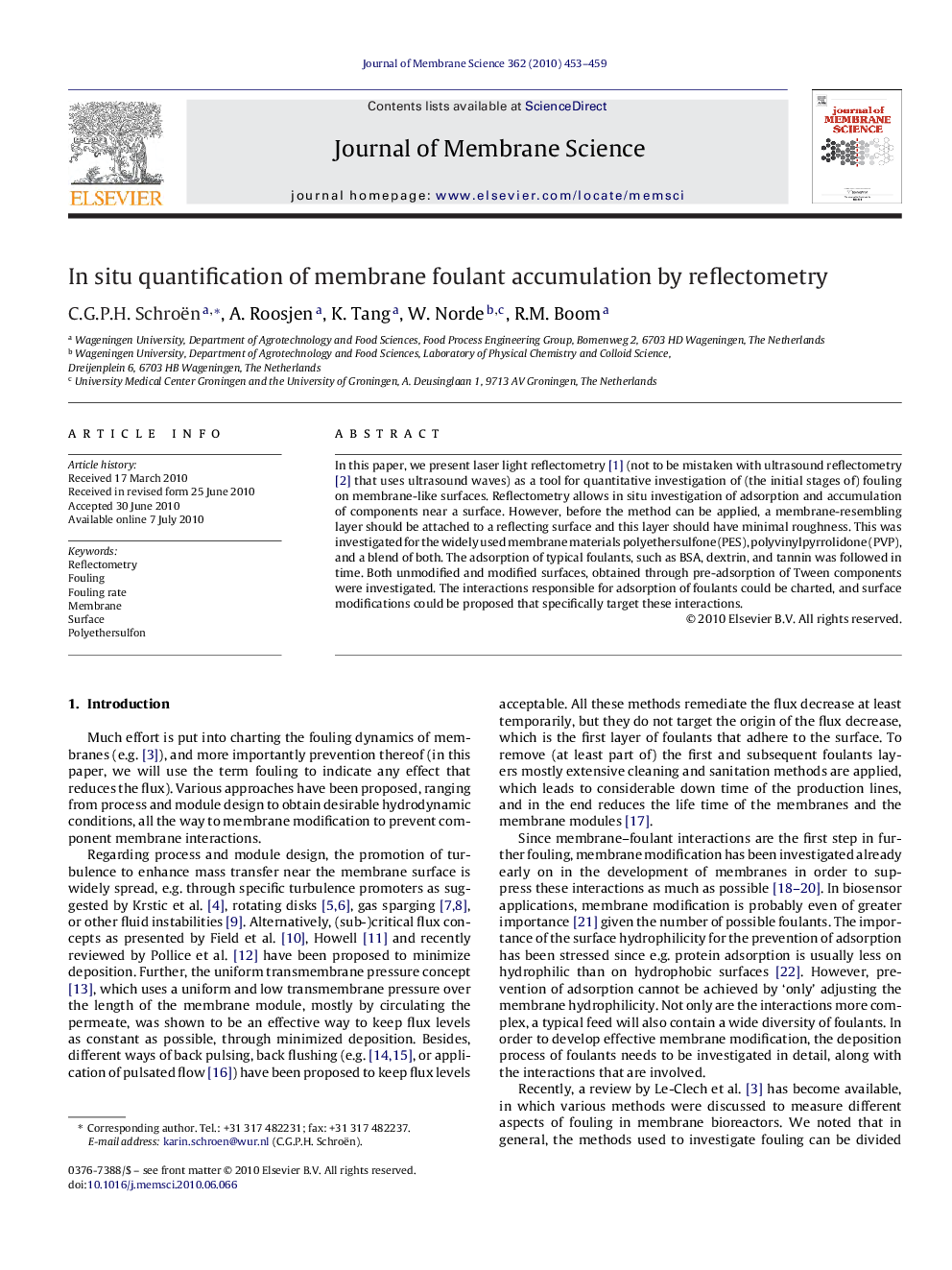| Article ID | Journal | Published Year | Pages | File Type |
|---|---|---|---|---|
| 636268 | Journal of Membrane Science | 2010 | 7 Pages |
In this paper, we present laser light reflectometry [1] (not to be mistaken with ultrasound reflectometry [2] that uses ultrasound waves) as a tool for quantitative investigation of (the initial stages of) fouling on membrane-like surfaces. Reflectometry allows in situ investigation of adsorption and accumulation of components near a surface. However, before the method can be applied, a membrane-resembling layer should be attached to a reflecting surface and this layer should have minimal roughness. This was investigated for the widely used membrane materials polyethersulfone (PES), polyvinylpyrrolidone (PVP), and a blend of both. The adsorption of typical foulants, such as BSA, dextrin, and tannin was followed in time. Both unmodified and modified surfaces, obtained through pre-adsorption of Tween components were investigated. The interactions responsible for adsorption of foulants could be charted, and surface modifications could be proposed that specifically target these interactions.
Research highlights▶ Reflectometry can be used to systematically investigate adsorption on membrane model surfaces, and is a very useful tool for fast evaluation of modification methods.
